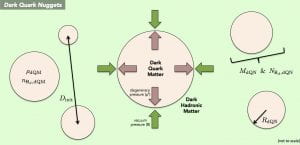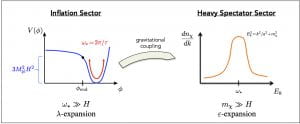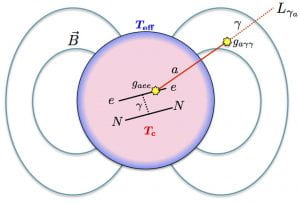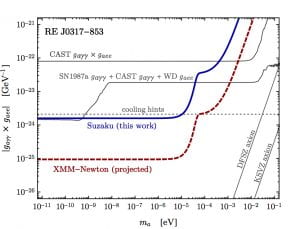Overview
- why the universe contains more matter than antimatter and how we can test the physics of “baryogenesis” using high-energy particle collider experiments or astrophysical observations;
- why most of the particles in the universe are made of an ephemeral “dark matter,” how did it form, and what is its nature;
- how to probe the relic neutrino background using cosmological and laboratory measurements;
- what processes may have created a primordial magnetic field in the early universe and how to test for its presence in our universe today;
- what can we learn about the universe from measurements of gravitational waves.
Recent research
Could dark matter be big?
While the presence of dark matter in our Universe is firmly established by an abundance of empirical evidence, its properties and interactions remain a mystery. Many studies have explored the idea that dark matter may be a collection of point-like (elementary) particles. However, most of the matter that we encounter throughout the Universe is “clumped up” into nuclei, molecules, dust, planets, and stars. So then, maybe dark matter too forms clumps.
In collaboration with Yang Bai and Sida Lu at the University of Wisconsin (1810.04360), we studied how dark matter “nuggets” could form in the early universe during a cosmological phase transition. This work naturally extends the idea of “quark nuggets,” proposed by Edward Witten in 1984. These nuggets may be macroscopically large in both mass and geometrical size, but their low population density makes them extremely challenging to detect here on Earth, and calls for new detection strategies to be explored!
What if dark matter only has gravitational interactions?
While we know very little about the properties and interactions of dark matter, there’s one thing that we know for sure: dark matter pulls on things! We see dark matter pulling on things at different periods in the cosmic history — as early as 100,000 years after the Big Bang and as late as today — and we observer it pulling on things at vastly different length scales — from the stars nearby to our Sun in the Milky Way up to the size of the observable universe. So it’s remarkable that all of this pulling can be perfectly-well explained if we simply posit that dark matter has mass and interacts with ordinary matter through gravity, in the way that Einstein wanted.
By contrast, we have no evidence that dark matter participates in any interactions beyond its gravitational one. In fact we have very stringent constraints on such non-gravitational interactions in many cases. This calls for the question: is it possible that dark matter might only interact gravitationally? The challenge with such a proposal is to explain how dark matter was created in the first place.
The idea of gravitational particle creation was first discussed in the early 20th century by people such as Erwin Schrodinger and Leonard Parker. The physics of gravitational particle creation is perhaps most familiar from its application to black holes through the phenomenon of Hawking radiation. In an expanding universe, particles can be created due to the way that quantum fields behaved in curved spacetime. Working in collaboration with Rocky Kolb at the University of Chicago and Daniel Chung at the University of Wisconsin (1812.00211), we have studied gravitational particle creation in a class of inflationary spacetimes and argued that particle creation can be much more efficient than previously believed.
What do X-ray observations of white dwarfs tell us about axions?
If your Physics 101 exam asked you to estimate the size of the neutron’s electric dipole moment, you would probably guess around 10^-13 e cm. After all, the neutron is composed of up- and down-type quarks with electric charges of 2e/3 and -e/3, respectively, and these quarks are confined within a region of space of about 1 fm. So 1 e fm = 10^-13 e cm. However the current upper limit on the neutron’s EDM is around 10^-26 e cm — meaning that our naive estimate was too large by a factor of at least 10 trillion!
The axion is a hypothetical particle that was proposed in 1977 to explain why the neutron’s electric dipole moment is so much smaller than our naive expectation. While the axion is wildly successful at solving this “Strong CP Problem,” we haven’t had any luck at detecting this particle in the lab. This is partly becuase the axion must interact extremely weakly with ordinary matter. However, in the dense environment of a compact star, such as a white dwarf star, the influence of the axion can be felt.
In collaboration with Ben Safdi and Chris Dessert at the University of Michigan (1903.05088), we proposed a new strategy for detecting axions and axion-like particles using X-ray observations of magnetic white dwarf stars. Axions, which are produced at the core of these stars, may be converted into X-rays as they exit the star and pass through its extremely strong magnetic field. Very little hard X-ray data is available on magnetic white dwarfs, which aren’t supposed to produce such energtic X-rays normally, and our work motivates further observations.



